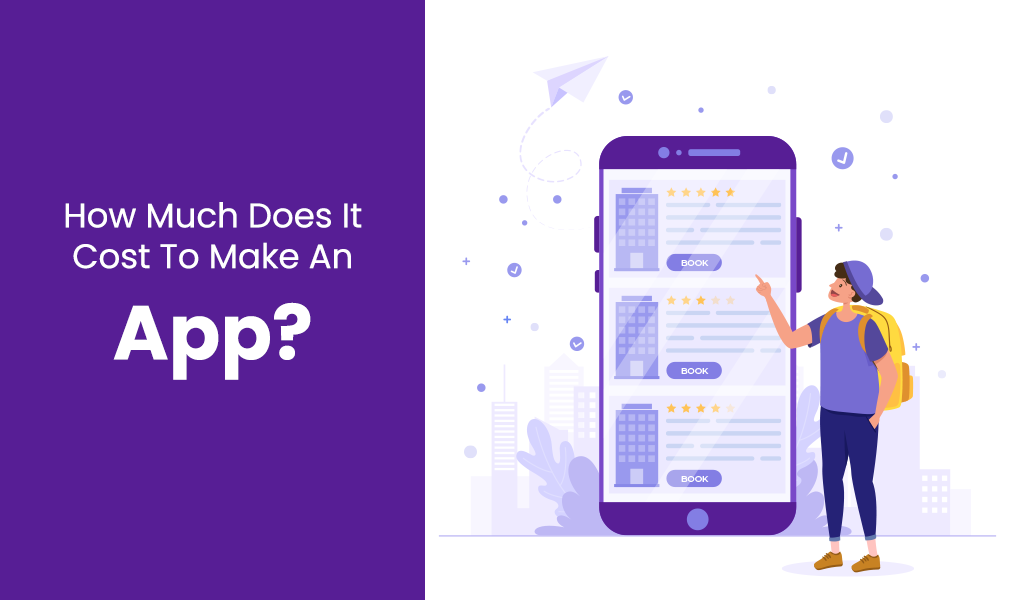
Android Vs iOS: Which One Should Businesses Build For?

Posted By: Vasudev Arora
July 30, 2020 |
Stimulating your brand image lies between two market leaders i.e. Android and iOS. As we are living in a world where technology adoption is enlarging on a steady basis and user diversion is a common factor. So, before implementing an app idea, it is crucial for enterprises to make a smarter and efficient decision considering their unique business domain, targeted audience, and geo-locations they are planning to launch, and more.
As we cannot deny the rising use of mobile phones and continuously uplifting selling activities using mobile devices. In recent years, the increasing utilization of mobile devices where everything is carried out leveraging mobile apps from ensuring shopping to booking an appointment to making online transactions compelled every business to deploy a rich navigational app.
Below figure demonstrates the increasing number of users in recent years:

Now, the question arises which platform should be chosen to deploy an app for better business exposure and to drive productivity. To figure out so, many facts come across as per your distinct business nature, user base, the product you deal with, and more. So, let’s derive a comparison android vs ios.
Market Share
When we talk about market share, Android has been the major player worldwide since the year 2016. As per Statista – in the year 2019, Android got success in gaining 87% of the market share whereas iOS could hold 13% of the market share across the global geo-locations.
Since iOS is manufactured by Apple Inc.- a giant brand and this is the reason why it holds more market value and pricing variation. When it comes to Android, it is manufactured by a number of market players from small scale to large scale. Thereby, the Android market is already filled with the huge competition itself and this thing impacted its app market too.
According to Statista, in the 3rd quarter of the year 2019, the gross revenue in the Google Play Store was $7.7 billion whereas, on App Store, users spent $54.2 billion in terms of in-app purchases, subscriptions, and other premium usages.
Audience
Before deploying an app, you need to evaluate your audience, the end goal of your app to attain, and the type of audience ideal for your business. Perform essential research to ensure your app success and for doing so various parameters take place such as:
- iOS users tend to be more opulent and earn 40% more than Android users.
- Women are more likely to have iPhones than Android phones.
- iOS users may have higher educational backgrounds and tend to be in managerial positions.
- Apple users seem more engaged with their iOS devices and spend more quality time on apps.
- Since iOS users are found on higher profiles hence, they prefer online shopping using apps as in the lack of time.
Thus, all you need to decide whether you are approaching the higher class of people or upper to lower middle class as people from the middle-income group are more likely to buy Android phones. So, if you are dealing with premium products then, you should go with iOS and if you think your products and services are budget-friendly you are willing to cater to using the mobile apps, Android apps could be a smarter decision for your business.
Demographics
The regions you are willing to target with your app can help you make a smarter choice. If you are targeting the global audience, then you need to perform micro research as well. If you are going to target your audience in smaller geographical locations, then evaluate and make sure you are deploying an app for the platform which is mostly used over there.
Smaller income group countries like European, South American, African, and Asian countries are most likely to prefer Android devices and thus, you need to develop an Android app for such user groups. On the other hand, certain countries with higher income levels encompassing the US, UK, and Australia prefer iOS. So, based on your targeted demographics, you can eternally make a productive choice.

Targeted User Base
It’s very crucial to know which type, category, or level of audience you are intended to target with your app. If you know your target audience in advance, half of your milestone is achieved. Perform deep analysis and make sure whether you are intended to offer your range of products to the higher income group of people or middle-income groups.
Usually, users from middle-income group levels are more likely to buy Android devices and users holding higher educational backgrounds with higher income levels prefer to invest in iOS. So, evaluate your product pricing and targeted buyers and then make a better decision to acquire your end-to-end app goals.
Deployment Complexity
When it comes to publishing your app, the app store consumes 24 to 48 hours which is already simplified as earlier iOS used to take even more than a week just to publish your app on the app store. Still, Android is more simplified than iOS as it takes a couple of hours and the utmost 24-hours. Besides, iOS allows quality apps to publish on the app store, so your app must be quality embedded. On the other hand, Android accepts even quality-compromised apps as well.
Now, pricing variation comes ahead between both. For iOS apps, you have to pay more price i.e. $99 per year while publishing your app on the app store whereas Android ensures cost-effective deals in this term as you are required to pay just $25 as a lifetime payment.
Time & Cost It Takes
Behind the deployment of any app whether for iOS platform or Android platform, a bulk of efforts are invested from the end of designers, developers, testers, quality experts, and more. It manifolds several tactics to ensure quality app delivery while imbibing the capabilities of engaging users and driving scalable results.

So, when it’s about time and cost involvement, iOS takes more time & effort compared with Android. iOS apps are required to be designed, developed, and tested to ensure smoother running and rich navigation across iOS devices. Android takes rest in this case as these apps are needed to be tested for a single device. thereby, the pricing factor goes accordingly.
Besides, the costing of the project also lies in the complexity of the Android or iOS development you avail of. Still, you are curious to know the lumpsum investment, then ready to invest $20 per hour onwards. Incumbent on your specific or customized requirements, your iOS or Android development cost may vary. To know more, techno-experts at Infoxen can eternally help you.
The Final Battle
Well, it’s not easy to make a choice between both these app development market players as both the platforms come with advantages and drawbacks. So, it’s your task to find out the one based on the above factors mentioned which one will give you more advantages and the least drawbacks.
While making an app deployment decision, both the platforms are unbeatable in their own terms. All you need to evaluate and analyze which one would be an optimum deal for your business to engage the right audience and obtain profitable outcomes. Thus, perform crucial research and then reach on a final decision. Rest you can always take recourse of Infoxen – a trusted cutting edge mobile app development company.

ABOUT AUTHOR
Vasudev Arora
Vasudev Arora as a Business Head at Infoxen is prolific in defining business growth strategies & stabilizing financial footing, to balance out long-term business goals. When not chairing his position, you will find him penning down his thoughts on disrupting technologies, IT-related & other software development trends from his industry exposure & business mindset.
From The Author Dairy
 September 11, 2020
September 11, 2020
React Vs Angular: A Battle Between Two
When the battle comes between JS frameworks, the two most popular names that come ahead are React an
Read More ⟶
 August 18, 2020
August 18, 2020
How Much Does It Cost For An On-Demand Grocery App Like Instacart
With the swift evolution of mobile technology and smartphone adoption, grocery delivery apps are als
Read More ⟶
 August 12, 2020
August 12, 2020
Native Vs Hybrid App: Which One To Choose For A Game-Changing Deal
Mobile Apps are considered a game-changing approach these days. Most of the organizations are impact
Read More ⟶



 India
India USA
USA